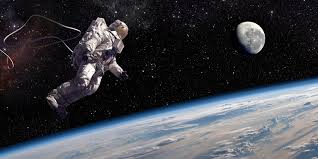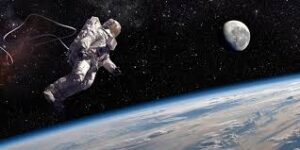10 Mind-Blowing Space Facts: Terrifying Truths


Space is a vast, mysterious, and endlessly fascinating frontier that has captivated humanity for centuries. From the mind-bending scale of the universe to the bizarre phenomena that defy our understanding of physics, space never fails to amaze. Whether you’re an astronomy enthusiast or just someone who loves intriguing facts, here are 10 incredible space facts that will make you see the cosmos in a whole new light.
1. Space is Completely Silent
One of the most eerie facts about space is that it is utterly silent. Sound waves need a medium (like air or water) to travel, but space is a near-perfect vacuum with no molecules to carry sound. This means that even the most violent cosmic events—like supernovas or black holes colliding—happen in complete silence.
If you were floating in space without a spacesuit, you wouldn’t hear anything, not even your own scream! Astronauts inside spacecraft communicate via radio waves, which can travel through the vacuum of space.
2. A Day on Venus is Longer Than a Year on Venus
Venus, Earth’s “sister planet,” has one of the most bizarre rotation patterns in the solar system. It takes Venus 243 Earth days to complete a single rotation on its axis (a day), but only 225 Earth days to orbit the Sun (a year). This means a day on Venus is longer than its year!
Additionally, Venus rotates backward compared to most planets—a phenomenon called retrograde rotation. Scientists believe this might be due to a massive collision or gravitational interactions in its early history.
3. There’s a Giant Water Reservoir Floating in Space
About 12 billion light-years away, astronomers have discovered the largest reservoir of water ever detected—a cloud of vapor surrounding a supermassive black hole. This cosmic water cloud contains 140 trillion times more water than all of Earth’s oceans combined!
This discovery shows that water has existed in the universe for nearly its entire history, appearing just 1.6 billion years after the Big Bang.
4. Neutron Stars Are the Fastest Spinning Objects in the Universe
Neutron stars are the incredibly dense remnants of massive stars that have gone supernova. A single teaspoon of neutron star material would weigh about a billion tons on Earth!
But what’s even more astonishing is their spin. Some neutron stars, called pulsars, rotate at mind-bending speeds—up to 700 times per second. That’s nearly a quarter the speed of light!
5. The Moon is Slowly Drifting Away from Earth
The Moon isn’t staying put—it’s moving away from Earth at a rate of 3.8 cm (1.5 inches) per year. This happens because of tidal forces between Earth and the Moon, which transfer energy and push the Moon into a higher orbit.
Billions of years ago, the Moon was much closer, making it appear huge in the sky. In about 50 billion years, the Moon will be far enough that total solar eclipses will no longer occur.
6. There’s a Planet Made of Diamond
About 40 light-years away, scientists have discovered a planet called 55 Cancri e, which is believed to be composed largely of diamond! This super-Earth has a carbon-rich composition, and under extreme pressure, its carbon has crystallized into diamond.
The planet is twice the size of Earth but has eight times its mass, making it one of the densest known exoplanets. If you could mine it (which is impossible with current technology), its diamond content would be worth quadrillions of dollars.
7. The Sun Makes Up 99.8% of the Solar System’s Mass
We often think of the solar system as a collection of planets, moons, and asteroids, but the truth is—the Sun dominates everything. It contains 99.8% of the solar system’s total mass, with Jupiter taking up most of the remaining 0.2%.
This means all the planets, moons, comets, and asteroids combined make up just 0.04% of the solar system’s mass. The Sun’s immense gravity is what keeps everything in orbit.
8. There Are More Stars in the Universe Than Grains of Sand on Earth
The universe is unimaginably vast. Astronomers estimate there are 100 billion galaxies, each containing 100 billion stars—meaning there are roughly 10²⁴ (1 septillion) stars in the observable universe.
To put that in perspective, Earth’s beaches have about 7.5 x 10¹⁸ (7.5 quintillion) grains of sand. That means there are more stars in the universe than all the grains of sand on every beach and desert on Earth!
9. A Black Hole’s Gravity Can Spaghettify You
Black holes are among the most terrifying objects in space because of their extreme gravity. If you got too close to one, you’d experience spaghettification—a process where the gravitational pull on your feet is so much stronger than on your head that you’d be stretched into a long, thin strand like spaghetti.
Even light can’t escape a black hole’s event horizon, making them invisible. The first-ever image of a black hole was captured in 2019, showing the shadow of the supermassive black hole at the center of galaxy M87.
10. The Universe Has a Temperature
Space might seem freezing cold (and it is in most places), but it actually has a baseline temperature due to the Cosmic Microwave Background (CMB) radiation—the afterglow of the Big Bang.
The average temperature of the universe is 2.7 Kelvin (-270.45°C or -454.81°F), just slightly above absolute zero. However, some regions, like near stars or in galactic centers, can get extremely hot.
Final Thoughts
Space is full of wonders that challenge our understanding of reality. From diamond planets to silent supernovas, the universe continues to surprise us with its mysteries. As technology advances, we’ll uncover even more incredible facts about the cosmos—perhaps even evidence of alien life!





